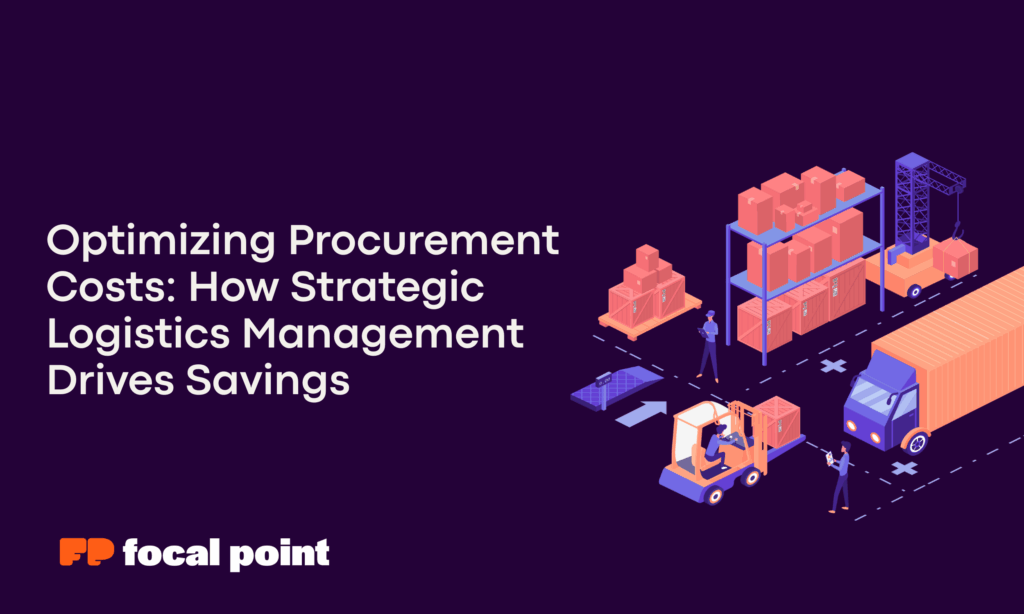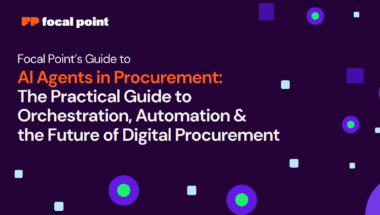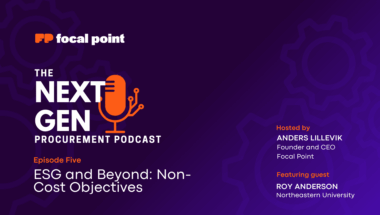Procurement is undergoing a data-driven revolution that’s helping cut costs and increase efficiency more than ever, but a key part of that shift is logistics management. Though often relegated to the back end, re-thinking logistics strategies is often the secret to optimizing procurement costs without losing output.
Procurement is a competitive business that’s inextricably linked to supply chain and logistics. Keep reading to learn how integrating these areas can help reduce procurement spend and enhance decision-making for a stronger, more agile approach.
Elevating Procurement Efficiency Through Strategic Logistics Integration
Streamlining logistics holds equal importance for procurement and the overall supply chain. This is even more true in high-stakes environments where balancing procurement efficiency and costs can be very challenging.
Shifting toward an integrated supply chain approach that synchronizes logistics planning with procurement allows businesses to do more while spending less. Much of this is down to the positive impact of coordinated planning. When procurement stays in contact with logistics, both can function better.
Here are some of the key areas of procurement that logistics integration can improve:
- Lead Time: Delivery scheduling can drain time and money if done poorly. No business wants to be stuck without important inventory for too long or risk disappointing customers, but that part of procurement is very much dependent on logistics.
However, integrating logistics on the planning side of things can ensure that delivery schedules are better optimized and that procurement works with logistics capacity and constraints, rather than against. The result is reduced lead times, happier customers, and more delivery consistency overall.
- Load Planning: This is another benefit of linking procurement with logistics. Instead of only focusing on what needs to be ordered, opening the conversation to see what makes sense for load planning can help cut transport costs in terms of both fuel spend and demurrage.
- Inventory Visibility: It’s one thing to know what’s in the warehouse, it’s another thing entirely for procurement teams to track what’s on its way (and where). One of the most strategic ways that procurement can make use of logistics management is in fostering a relationship where logistics teams share their real-time tracking of goods. This helps flag potential supply chain delays and generally reduces last-minute issues that could otherwise be quite costly.
For example, procurement can renegotiate the order window if they notice a delay or call up a favor with another supplier and make that original order time simply by getting up-to-date inventory information from logistics providers.
- Overall Agility: This is the big advantage that integrating logistics into procurement can provide. By having access to transport schedules, live tracking, etc. procurement is able to adjust far more nimbly in the face of things like demand spikes or delivery changes. This in turn boosts efficiency as procurement isn’t left scrambling at the last minute, forced to make impossible and expensive choices.
Fostering Collaboration: How to Unite Procurement and Logistics for Enhanced Performance
Collaboration between logistics and procurement is usually blocked by one main issue: safe, standardized information sharing. This study showed that in action in Malaysia’s oil and gas industry, and the learnings prove just how important communication is when trying to foster greater collaboration between these two areas.
Within that communication, here’s what’s worth prioritizing:
- Joint Planning: Capacity and timelines are the two big ones here. Involving logistics early in this conversation can lead to better shipping routes and costs.
- Shared Data and Visibility: An integrated TMS platform can provide real-time tracking of goods as well as predictive insights on demand, routing, etc. Sharing a platform and dashboard allows for easy exchange of accurate information that allows both logistics and procurement teams to feel that they’re getting benefits from the collaboration. This then helps motivate further development of the relationship.
- Cross-Functional Teams: It’s not always possible or necessary, but certainly for big launches or programs, a team that works in both procurement and logistics can help create a more united front.
- Build a Common Language and Approach: There can be quite a bit of friction between logistics and procurement teams as often the one will feel as if the other is making their job more difficult. Building shared goals and approaches allows these conflicts to ease and for a shared language to develop. That then creates the foundation for better exchange of information and greater trust.
Identifying and Eliminating Hidden Costs via Advanced Logistics Strategies
Advanced logistics strategies, especially those that use live tracking and predictive data analytics, provide major insight for procurement teams on where unnecessary spending might be happening. Issues such as lead time inaccuracies, detention fees, or underutilized trucks can all weigh heavily on a procurement budget but it’s only possible to see this kind of mismanagement if logistics teams are tracking it with advanced technology and then sharing that data.
Enhancing Decision-Making with Data-Driven Logistics Insights
Data-driven logistics can help optimize route choices, allow businesses to reflect on historical patterns and make fewer errors next time, and ultimately provide greater past, present, and future visibility to the supply chain. This in turn offers major competitive advantages to procurement teams looking to run more efficient and cost-effective systems.
It can be as simple as using logistics data to offer customers shorter lead times or using freight information for more consolidated ordering. There’s little end to just how much more procurement can do when backed by the insights of great logistics data.
Procurement Success Starts with Smarter Logistics
Strategic logistics management isn’t just a support function, it’s a core driver of procurement cost savings and agility. From reducing lead times and improving load planning to enhancing visibility and collaboration, logistics plays a pivotal role in optimizing procurement outcomes. As supply chains grow more complex and customer expectations rise, aligning procurement with logistics through shared data, joint planning, and advanced technology becomes essential. Businesses that take a proactive, integrated approach will not only cut costs but also build stronger, more resilient operations. The bottom line? Smart logistics leads to smarter procurement and better results across the board.



